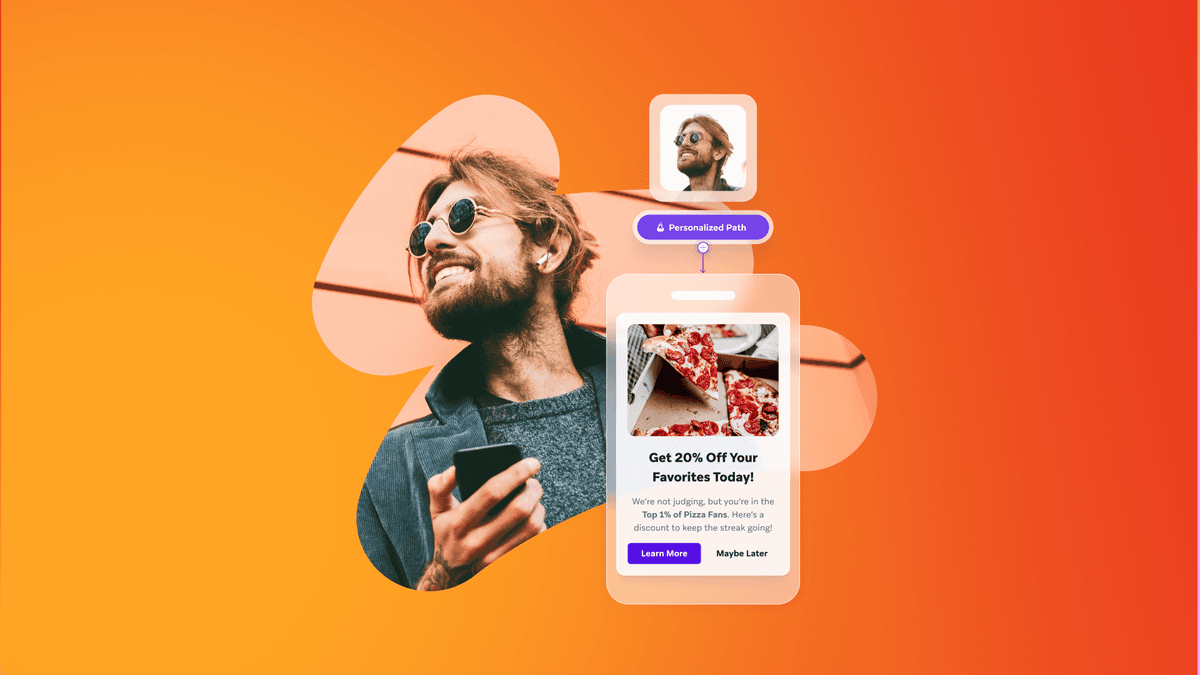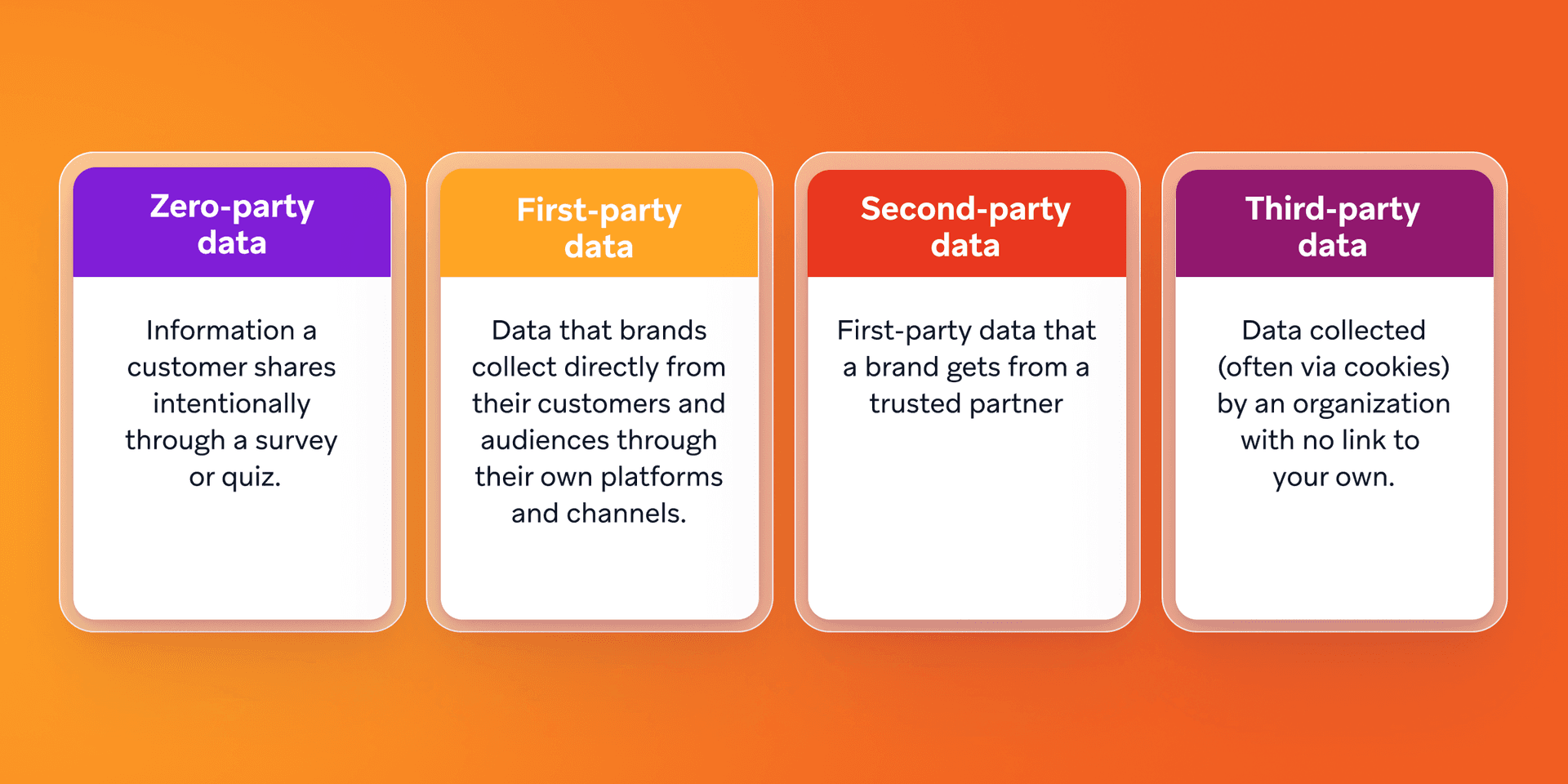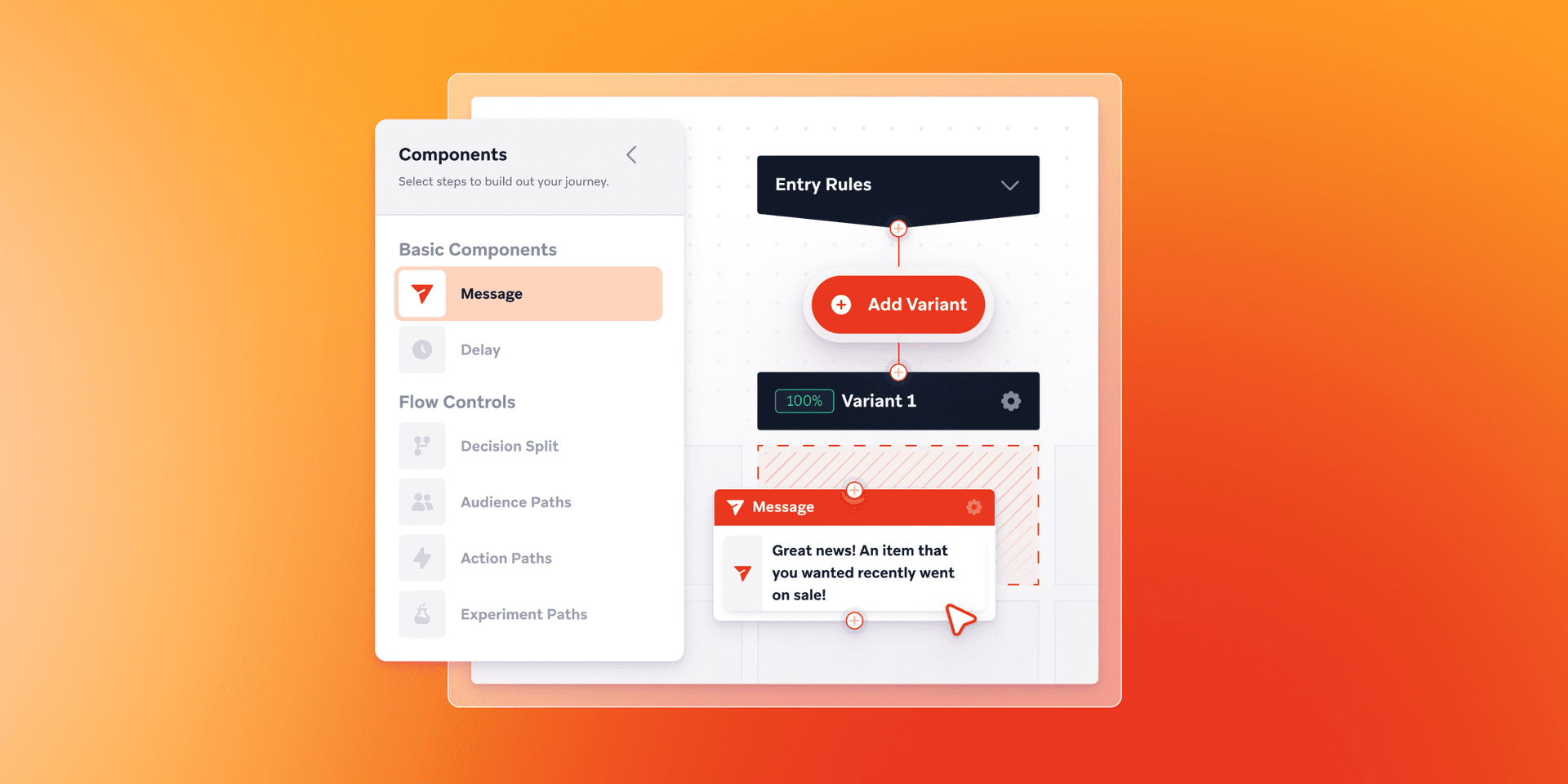Customer journey analytics explained
Published on September 22, 2025/Last edited on September 22, 2025/9 min read

Published on September 22, 2025/Last edited on September 22, 2025/9 min read


Customer journey analytics give brands a clear, connected view of every interaction a customer has with them—across channels, devices, and moments in time. Bringing this data into one place provides brands a complete picture—showing how customers move from first touch to loyal advocate, where momentum slows, and what shapes their decisions along the way.
Beyond reporting on past activity, multichannel customer journey analytics enable brands to adapt in real time, anticipate what a customer might do next, and deliver the personalized experiences they expect. That means more relevance, stronger engagement, and better long-term results.
In this guide, we’ll explore:
Customer journey analytics is the practice of collecting, unifying, and analyzing data from every customer interaction to understand behavior and improve outcomes. Often called customer journey data analytics, this approach provides a full picture of how people engage with a brand over time—across all touchpoints, channels, and devices.
Where traditional analytics might focus on a single campaign or channel in isolation, customer journey analytics brings together insights from email, push, SMS, in-app, web, social, and offline interactions. Examining these experiences side by side makes it possible to:
By leveraging these B2B vs. B2C journey analytics and insights, brands can design and adapt customer experiences with precision—shaping every interaction to align with customer needs and business goals.
Customer journey mapping creates a visual outline of the experience you want customers to have, from the first interaction to long-term engagement. It shows the intended stages and touchpoints, helping teams design a consistent, coherent journey.
Customer journey analytics focuses on how those journeys actually play out. It captures real-world behavior across touchpoints, highlights where customers follow the planned path or deviate from it, and reveals the factors driving those patterns.
When used together, mapping provides the framework for the experience, while analytics uses live data to measure, validate, and improve it—turning design concepts into actionable insights.
Customer journey analytics gives brands the insight needed to design, measure, and adapt experiences that drive long-term value. Unifying data across channels helps teams understand what customers are doing, why they’re doing it, and how to guide them toward deeper engagement.
By viewing every touchpoint in context, brands can see the complete path a customer takes—from initial awareness through repeat purchase or renewal. This perspective makes it easier to identify the moments that move customers forward and the points where they stall or drop off.
A full-journey view makes it easier to spot friction early and address it before it impacts the experience. For example, if analytics reveal a high drop-off between a pricing page and signup page, teams can test new approaches to improve that step and keep customers moving.
Addressing bottlenecks and optimizing high-impact touchpoints naturally improves conversion rates. Real-time analytics enable teams to experiment, measure the impact of changes, and roll out the best-performing approaches faster.
Customer journey analytics makes it possible to act on churn signals early—whether that’s a lapse in engagement or a shift in purchasing behavior. A smoother, more personalized journey increases the likelihood customers will stick around, spend more, and advocate for your brand.
By leveraging journey insights, brands can identify which interactions, offers, and experiences have the biggest influence on purchase decisions. Focusing resources on these high-impact moments helps increase average order value, repeat purchases, and overall lifetime value.
Giving every team access to the same journey insights breaks down silos. Marketing, product, and service teams can work from the same playbook, focusing on shared priorities and delivering consistent experiences across channels.
The value of customer journey data analytics depends on the quality and variety of the data available. By combining different data types, brands can uncover patterns in behavior, understand the motivations behind those actions, and decide how to respond.
Tracks actions customers take, such as browsing products, opening emails, starting app sessions, or clicking links.
Covers purchase history, order values, subscription renewals, and refund activity—key for identifying buying patterns.
Measures how customers respond to brand communications, from email opens and push notification clicks to social media interactions.
Includes feedback from surveys, customer support conversations, social listening, and reviews to assess satisfaction and highlight pain points.
Adds detail about the circumstances of each interaction, such as location, device type, time of day, or even weather.
For customer journey analytics to deliver accurate, actionable insights, you need a complete view of each customer—built from multiple data sources and stitched together into a single profile. This prevents blind spots and ensures you’re personalizing based on the full picture. Data sources may include:

Customer journey analytics turns raw data into actionable steps that improve the customer experience. The process can be adapted to any industry, but most successful programs follow a similar approach:
Start by setting clear goals—whether that’s reducing churn, increasing conversion rates, or improving onboarding completion. These objectives will guide how you collect, analyze, and act on the data.
Outline the main journey stages for your audience, then bring together the relevant data from each touchpoint. The more complete your dataset, the easier it is to spot trends and exceptions.
Look for stages with high drop-off, longer-than-expected wait times, or low engagement. Cross-reference with qualitative feedback to understand why those issues occur.
Introduce changes—such as new messaging, incentives, or channel mixes—and measure their impact. Use these findings to continuously refine the journey.
Integrate or collect your data within a customer engagement platform like Braze to enable journey orchestration and trigger real-time responses. This could mean sending a push notification when a customer stalls at checkout or delivering personalized recommendations based on recent browsing behavior.

Once you know what you want to achieve with customer journey analytics, the next step is finding a platform that can make it happen. The right customer journey analytics tool should give you the ability to act on data in the moment, adapting journeys in response to live customer behavior. That means looking for features that help your team design, coordinate, and refine experiences across channels without bottlenecks or guesswork.

Key capabilities to consider:
Modern no-code or low-code interfaces let marketers create and adjust complex journeys without heavy engineering support. Drag-and-drop components make it easy to visualize paths, set entry rules, and test variations.
Branching logic and next-best-action capabilities adjust each customer’s path in real time, based on preferences, behaviors, and context.
Execute messaging instantly when customers take—or don’t take—specific actions, from completing a purchase to pausing midway through signup.
Orchestrate campaigns across email, push, in-app, SMS, web, and more from a single interface, so a signal in one channel can automatically trigger a response in another.
Test copy, creative, timing, and channel mix within the same environment. Use automation to direct customers toward the most effective path for your business goals.
Platforms should handle large volumes of data and sends with minimal latency, ensuring that personalized experiences are delivered exactly when they’re most relevant.
Customer journey analytics turns everyday interactions into a source of strategic advantage. Used consistently, it helps brands adapt in real time, deepen relationships, and grow sustainably. The brands that keep building on these capabilities will be the ones that stay ahead as customer expectations evolve.
Customer journey analytics focuses on measuring and analyzing how customers interact with a brand over time, using real data from multiple touchpoints. Customer journey mapping is more of a visual planning tool that outlines the intended experience but doesn’t necessarily rely on live data.
Customer journey analytics draws from a mix of behavioral, transactional, and engagement data. This can include purchase history, website activity, app usage, support interactions, and campaign engagement metrics.
Customer journey analytics—and especially predictive analytics in customer journeys—is important because it helps businesses understand patterns, preferences, and potential friction points in the customer experience. These insights support smarter decisions that can improve retention, conversion, and overall customer satisfaction.
Customer journey data analytics supports personalization by revealing individual and segment-level behaviors in real time. This allows teams to deliver content, offers, and messages that match each customer’s current stage, needs, and preferences.
Yes. By identifying patterns in historical and real-time customer journey data, customer journey analytics tools can forecast likely future actions, such as purchase intent or churn risk, so brands can respond proactively.
Sign up for regular updates from Braze.